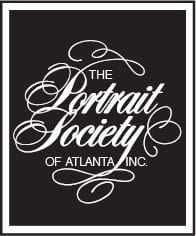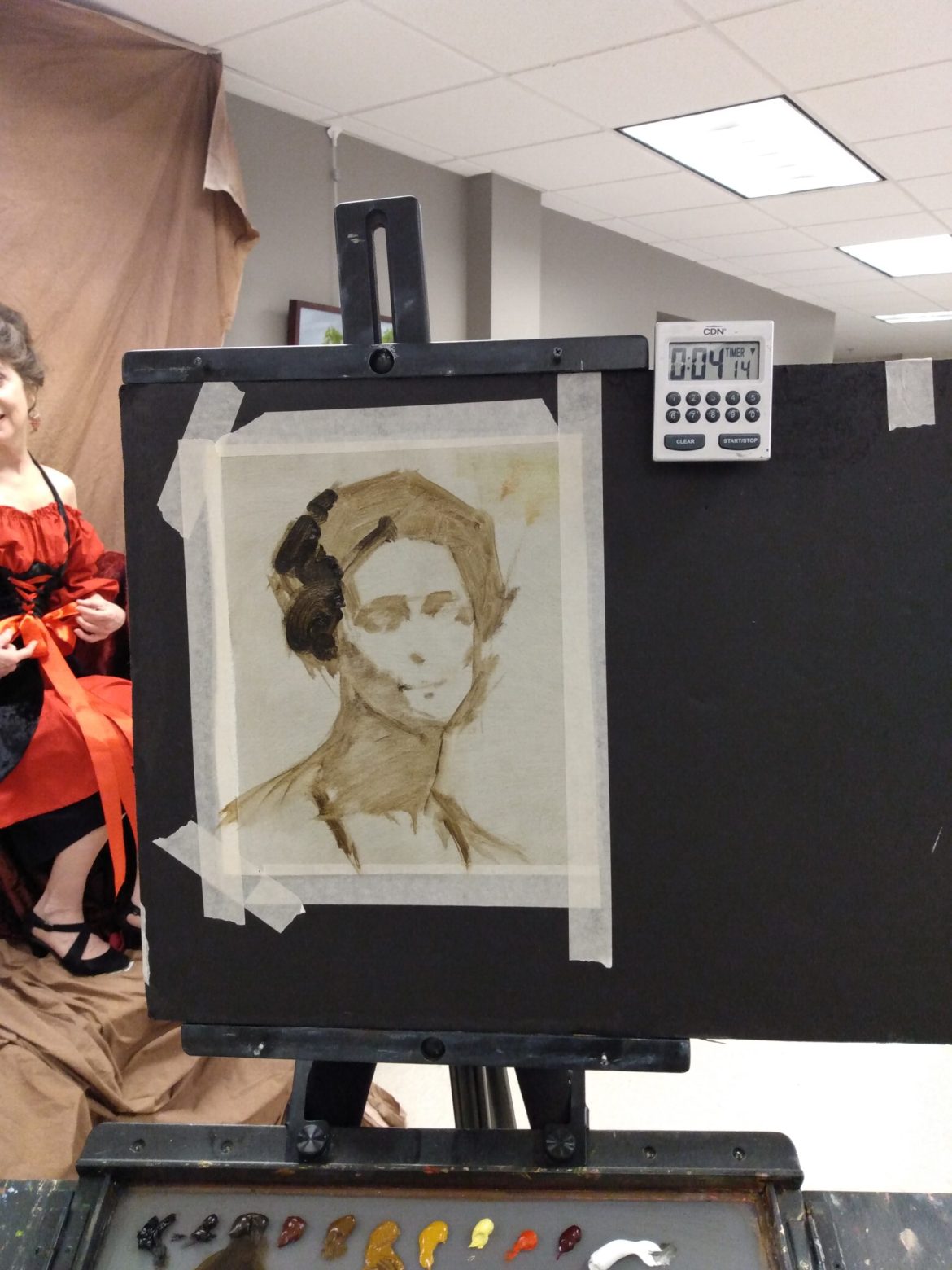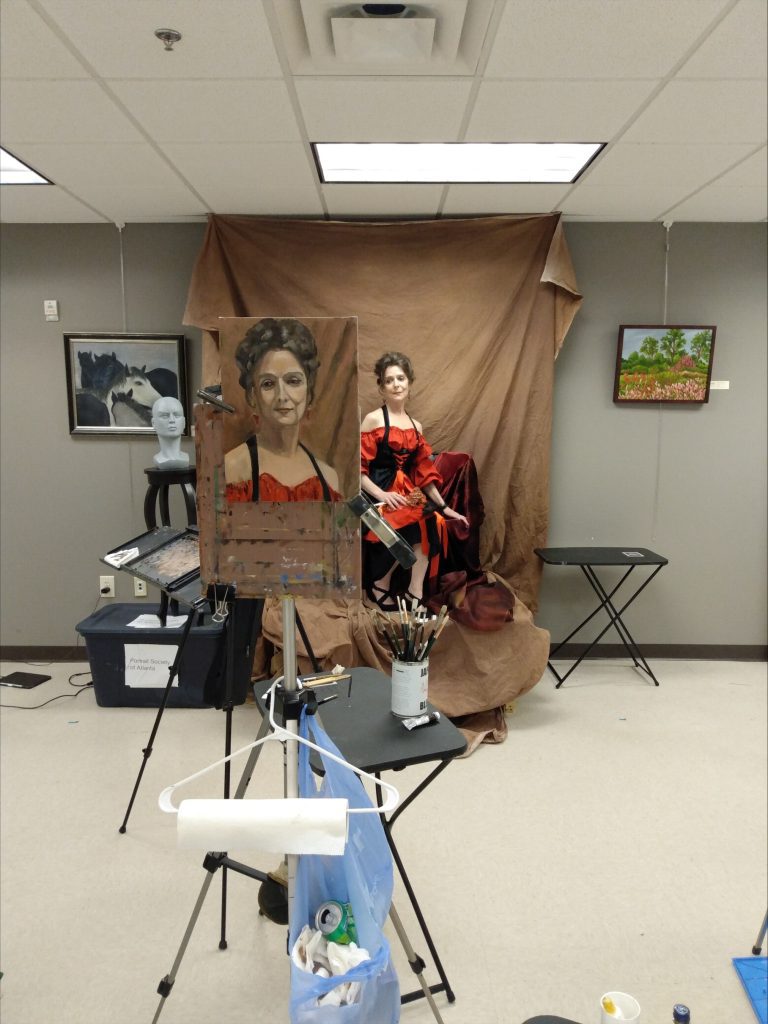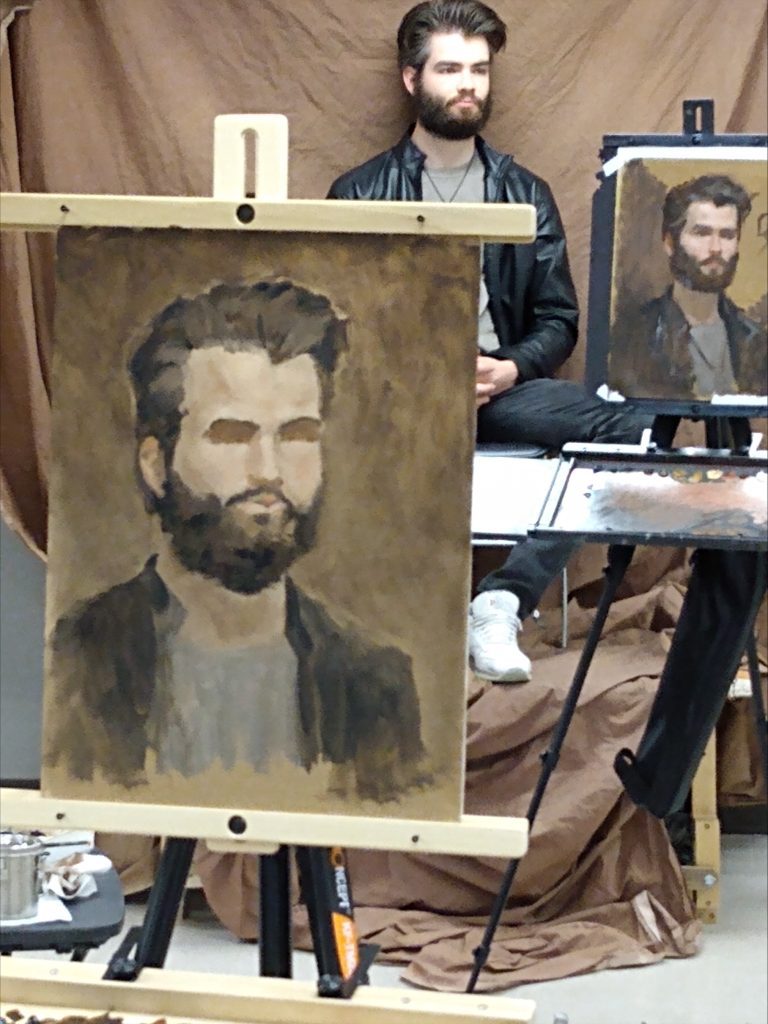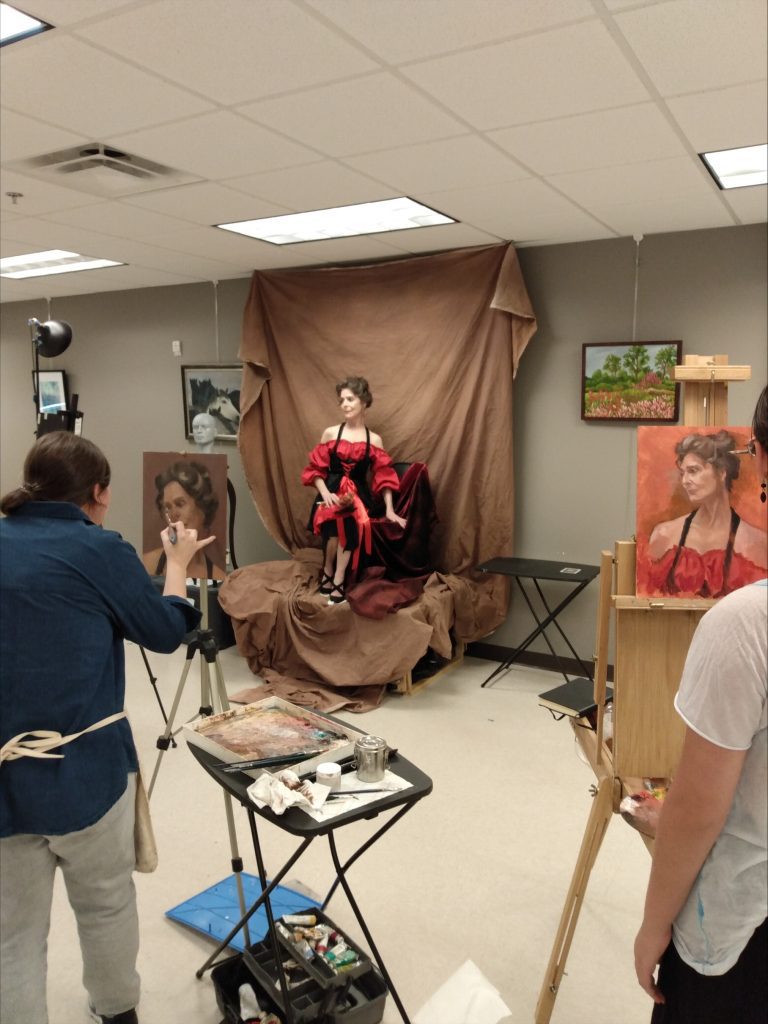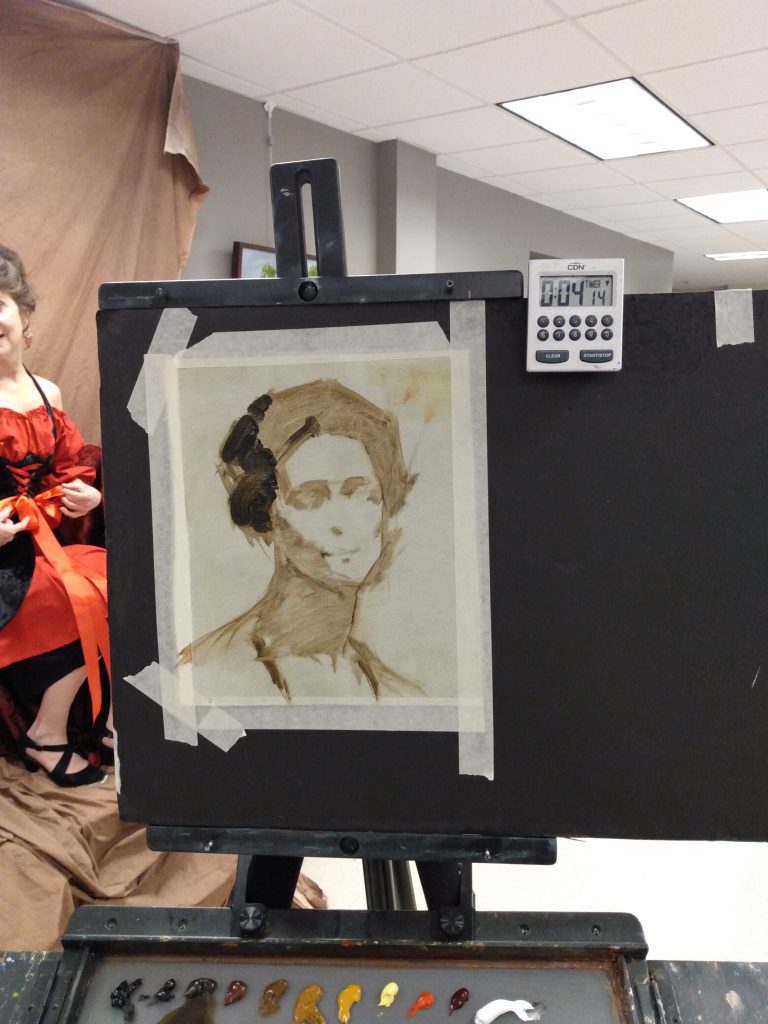By Scott Short
In some ways, Sandra Sanchez’s oil painting workshop Features to Faces began not on its official first day, but weeks before—via a simple PDF. That supply list was more than a formality. As a veteran teacher, Sanchez had students making choices before the class even started. She suggested experimenting with color at home I learned that her go-to colors, including asphaltum, king’s blue light, and yellow oxide—paints with subtle properties ideal for fleshtones, adding depth, warmth, and translucence that would prove critical in later exercises.
When the official workshop began, it quickly became clear that demonstration would be its heart. This wasn’t a class that left students to figure things out alone after a few casual pointers. Sanchez was methodical and precise. Her process started with measurements, capturing the likeness monochromatically first – no color until the underlying form was accurate. She stressed building the foundation before ornamenting it.
For the first two days, participants focused not on entire faces but on isolated features – studying, copying, and painting from masterworks by Bouguereau and Rembrandt. It was forensic—almost anatomical—in its approach. Sanchez highlighted the power of shapes: describing the outer corner of the eye as a “piece of pizza,” the cartilage of the ear as a “telephone handset,” and the white of the eye as a “shark’s fin.” These analogies weren’t mere whimsy. They trained us to see forms abstractly, to break them down into manageable visual puzzles, echoing the way many old masters taught apprentices to see.
It worked. Eyes, noses, ears—once unmanageable lumps of shadow and light—became more readable and ultimately more paintable.
Then the workshop shifted gears. Days three and four were live-model sessions. Here, theory met chaos. One model in particular – a young man with a large beard – presented a nearly featureless topography of value. The flesh that was visible read almost as a single tone, demanding that students invent subtle color variations to keep the portrait from falling flat.
Through it all, Sanchez moved from easel to easel, offering individualized advice, sometimes stepping in with a single corrective stroke that could rescue a lost painting. There was no sense of hierarchy or intimidation. Her feedback was pragmatic and direct, and it often felt like watching a locksmith pick a stuck mechanism – one deft nudge, and suddenly it worked.
For all the rigor, there was also discovery. Those optional paints from the supply list turned out to be anything but trivial. They solved problems we didn’t know we’d have. Asphaltum’s deep warmth anchored shadows without killing them. Transparent yellow oxide added life to midtones. King’s blue light brought subtle, cool volume to forms, preventing them from feeling dead.
Features to Faces is designed for painters serious about accuracy and learning to see, with an emphasis on process over product. And the payoff is real. I saw my work improve over four days. More importantly, I left with new ways of seeing and solving pictorial problems.
In the end, the workshop’s title proves apt. You don’t just paint a face. You build it, piece by piece, feature by feature, shape by shape, until it lives.

